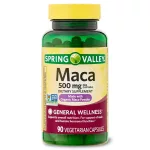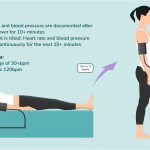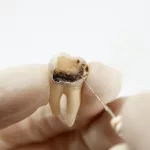Recommended overall cholesterol targets are below 200 milligrams per deciliter (mg/dL) for adults and below 170 mg/dL for children. Women generally benefit from higher HDL (good) cholesterol compared with men.
Cholesterol is a fatty, waxy compound produced by your liver. Your body makes all the cholesterol it requires for normal functioning, though cholesterol is also present in some foods.
According to the , having excessive levels of the harmful type of cholesterol — low-density lipoprotein (LDL) — may raise your risk for certain medical problems.

Continue reading to find out the advised cholesterol targets by age.
How is cholesterol measured?
A clinician measures blood cholesterol using a lipid panel. This yields total cholesterol, which is composed of three main lipids:
- Low-density lipoproteins (LDLs) transport cholesterol in your bloodstream. LDL is labeled “bad” cholesterol because high concentrations can deposit plaques in your arteries, elevating heart disease risk.
- High-density lipoproteins (HDLs) offer protection against heart disease. HDL is considered “good” cholesterol because it ferries cholesterol back to the liver to be eliminated from the body.
- Triglycerides are another form of fat that can accumulate in the body. They serve as the “building blocks” related to cholesterol.
Elevated triglyceride levels and low HDL increase the likelihood of heart disease.
Cholesterol in adults
The advises adults to have cholesterol screening every 4–6 years starting at age 20, which is when levels may begin to climb.
Per the 2018 guidelines on blood cholesterol management published in the , these are the desirable, borderline, and high ranges for adults.
All figures are in mg/dL (milligrams per deciliter) and reflect fasting measurements.
Total cholesterol HDL cholesterol LDL cholesterol Triglycerides
Total cholesterol HDL cholesterol LDL cholesterol Triglycerides
Good Less than 200 (lower is preferable) Ideal is 60 or higher; acceptable is 40+ for men or 50+ for women Less than 100; below 70 if coronary artery disease is present Less than 149; ideal under 100
Borderline to moderately elevated 200–239 n/a 130–159 150–199
High 240 or higher 60 or higher
160 or higher; 190 is considered very high 200 or higher; 500 is considered very high
Low n/a less than 40 for men and less than 50 for women n/a n/a
Guidance is alike for men and women older than 20 years. Differences may occur for HDL cholesterol, as noted above. Women should target higher HDL levels.

Cholesterol in children
Various factors influence a child’s chance of elevated cholesterol, including:
The CDC suggests children have cholesterol screening between ages , and again between 17–21 years. Children with additional risk factors, such as diabetes or obesity, may require more frequent checks.
Per the , the recommended cholesterol values for children are listed below; all numbers are mg/dL:
Total cholesterol HDL cholesterol LDL cholesterol Triglycerides
Total cholesterol HDL cholesterol LDL cholesterol Triglycerides
Good 170 or less Greater than 45 Less than 110 Less than 75 in children 0–9; less than 90 in children 10–19
Borderline 170–199 40–45 110–129 75–99 in children 0–9; 90–129 in children 10–19
High 200 or higher n/a 130 or higher 100 or more in children 0–9; 130 or more in children 10–19
Low n/a Less than 40 n/a n/a
Cholesterol treatment options
A clinician may suggest a treatment strategy for elevated cholesterol. This depends on factors such as concurrent medications, age, sex, and overall health.
Treatment often combines lifestyle and dietary adjustments with medications when needed.
Common drugs prescribed for high cholesterol include:
- statins
- bile acid sequestrants, for example cholestyramine
- cholesterol absorption inhibitors, such as ezetimibe (Zetia)
- bempedoic acid, like Nexletol
- PCSK9 inhibitors
Medicines may also target contributing issues like high triglycerides and can be used alongside some of the drugs above.
Lifestyle changes
Several lifestyle adjustments are effective at lowering cholesterol. They are generally simple to implement and suitable for most ages and abilities.
Consider these changes to help decrease cholesterol:
- aim for at least 150 minutes of moderate- to vigorous-intensity exercise weekly
- increase intake of dietary fiber, such as whole grains
- choose more heart-healthy fats
- limit foods high in saturated fat
- reduce processed food consumption
- follow a heart-friendly eating pattern
- stop smoking, if you smoke
- moderate alcohol use
- work toward a healthy body weight for you
When to see a doctor
High cholesterol rarely causes noticeable symptoms. Serious events like stroke or heart attack may be the only signs of damage from long-standing high cholesterol. Regular medical monitoring is therefore important.
Most people should have a cholesterol blood test every 4–6 years. However, your clinician may advise more frequent screening if any of the following apply to you:
- personal history of heart disease
- family history of high cholesterol
- diets high in trans and saturated fats
- smoking
- physical inactivity
- diabetes
- overweight or obesity
- menopause
- high blood pressure
Frequently asked questions
What is normal LDL for a 70-year-old?
Adults should aim for total cholesterol below 200 mg/dL and LDL below 100 mg/dL.
What range should your HDL and LDL be?
A healthy LDL for adults is 100 mg/dL or lower. Healthy HDL targets are about 40 mg/dL for men and 50 mg/dL for women.
Takeaway
Cholesterol is a waxy, fatty substance made by the liver that’s necessary for normal bodily processes. However, too much cholesterol raises the chance of developing certain health problems.
Those aged 19 or younger should target a total cholesterol of 170 mg/dL or less, while adults should aim for 200 mg/dL or under.
Talk with a healthcare provider if you need support lowering cholesterol. They can design an individualized plan suitable for you.


















Leave a Reply
You must be logged in to post a comment.